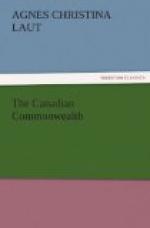South Africa and Australia “hushed” so very hard and were so very careful that after a very extensive experience—150,000 Hindus settled in one colony—both colonies legislated to shut them out altogether. At least South Africa’s educational test amounted to that, and South Africa and Australia are quite as imperial as Canada. Why did they do it? The labor unions were no more behind the exclusion in those countries than in British Columbia. The labor unions chuckled with glee over the embarrassment of the whole question.
II
Each side of the question must be stated plainly, not as my personal opinions or the opinions of any one, but as the arguments of those advocating the free admission of the Hindu, and of those furiously opposing the free admission.
A few years ago British Columbia was at her wit’s ends for laborers—men for the mills, the mines, the railroads. India was at her wit’s ends because of surplus of labor—labor for which her people were glad to receive three, ten, twenty cents a day. Her people were literally starving for the right to live. It does not matter much who acted as the connecting link,—the sawmill owners, the canneries, the railroads, or the steamships. The steamship lines and the sawmill men seem to have been the combined sinners. The mills wanted labor. The steamship lines saw a chance to transport laborers at the rate of twenty thousand a year to and from India. The Hindus came tumbling in at the rate of six thousand in a single year, when, suddenly, British Columbia, inert at first, awakened and threatened to secede or throw the newcomers into the sea. By intervention of the Imperial government and the authorities of India a sort of subterfuge was rigged up in the immigration laws. The Hindus had been booked to British Columbia via Hong Kong and Hawaii. The most of the Japs had come by way of Hawaii. To kill two birds with one stone, by order-in-council in Ottawa, the regulation was enacted forbidding the admission of immigrants except on continuous passage from the land of birth. Canada’s immigration law also permits great latitude in interpretation as to the amount of money that must be possessed by the incoming settlers. Ordinarily it is fifty dollars for winter, twenty-five dollars for summer, with a five hundred dollar poll tax against the Chinaman. The Hindus were required to have two hundred and fifty dollars on their person.




